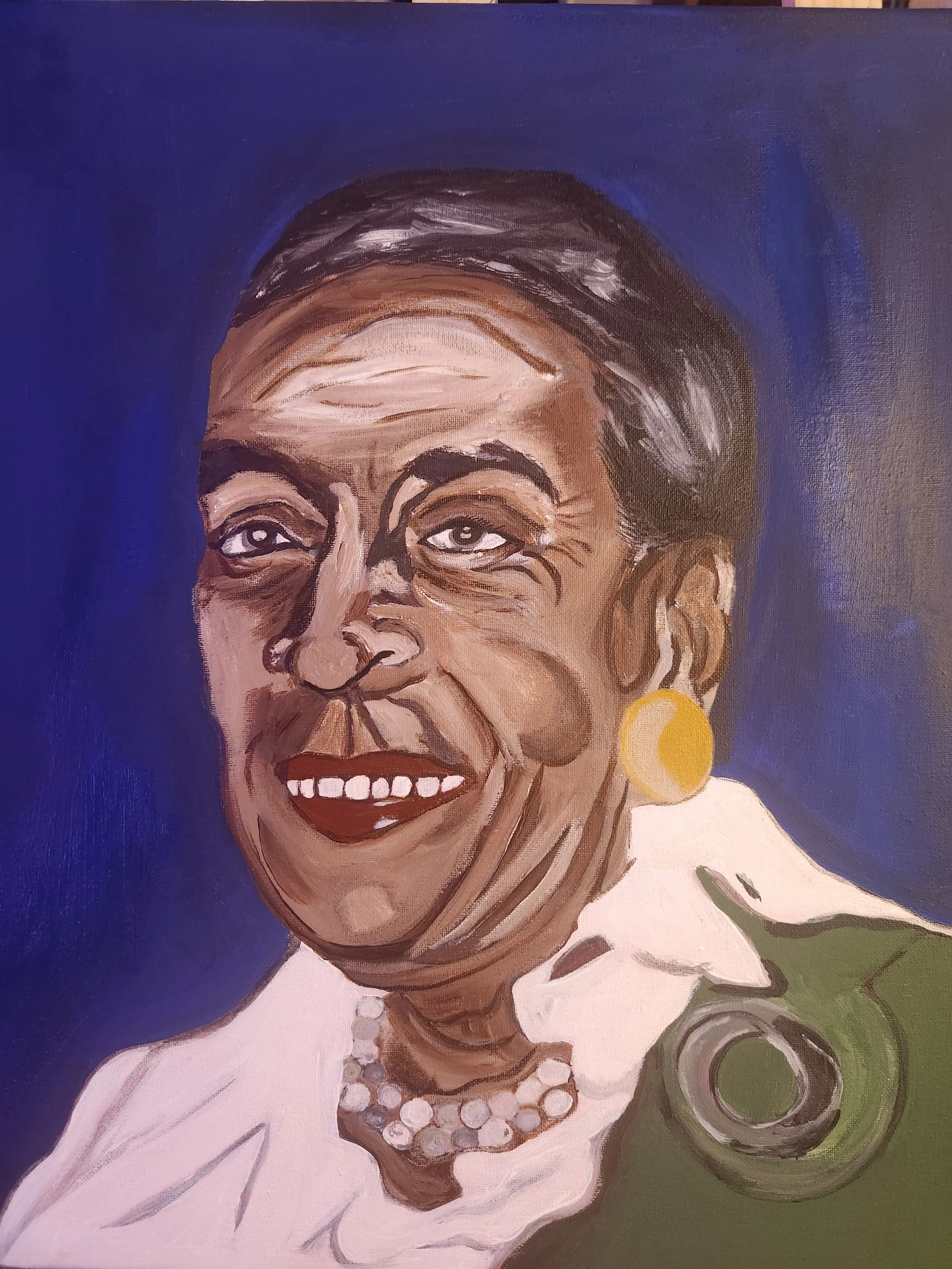 Image 1 of 1
Image 1 of 1


Brooklyn's Tree Lady
16×20
"This piece honors Hattie Carthan — a visionary environmentalist and community organizer whose roots in 1960s Brooklyn ran as deep as the trees she fought to protect. In a time when redlining and the early tides of gentrification threatened to erase Black and brown communities, Hattie Carthan used something as simple and profound as her love of plants to resist. She transformed neglected blocks into blooming sanctuaries and turned greening into a radical act of preservation, protection, and pride.
Her advocacy didn’t just beautify Bedford-Stuyvesant — it built power. She rallied neighbors, organized tree-planting campaigns, and created safe, green spaces where none had existed before. Perhaps her most enduring contribution is the Magnolia Tree Earth Center, a beacon of environmental justice that still stands today — home to NYC’s only living landmark, a 40-foot Magnolia Grandiflora she once saved from demolition.
Her tenacity knew no limits. In an era when Black women were rarely seen as civic leaders, she acquired three brownstones for just $1200 — not to gentrify, but to galvanize. She used them to host youth programs, workshops, and sustainability projects, all centered on restoring both the environment and the dignity of her community.
This work is a tribute to her belief that healing the land can help heal the people. Through her example, we see that resistance doesn’t always look like protest — sometimes, it looks like planting trees, reclaiming space, and refusing to let your neighborhood be erased. Hattie Carthan showed us that environmental justice is social justice — and her legacy continues to grow.
16×20
"This piece honors Hattie Carthan — a visionary environmentalist and community organizer whose roots in 1960s Brooklyn ran as deep as the trees she fought to protect. In a time when redlining and the early tides of gentrification threatened to erase Black and brown communities, Hattie Carthan used something as simple and profound as her love of plants to resist. She transformed neglected blocks into blooming sanctuaries and turned greening into a radical act of preservation, protection, and pride.
Her advocacy didn’t just beautify Bedford-Stuyvesant — it built power. She rallied neighbors, organized tree-planting campaigns, and created safe, green spaces where none had existed before. Perhaps her most enduring contribution is the Magnolia Tree Earth Center, a beacon of environmental justice that still stands today — home to NYC’s only living landmark, a 40-foot Magnolia Grandiflora she once saved from demolition.
Her tenacity knew no limits. In an era when Black women were rarely seen as civic leaders, she acquired three brownstones for just $1200 — not to gentrify, but to galvanize. She used them to host youth programs, workshops, and sustainability projects, all centered on restoring both the environment and the dignity of her community.
This work is a tribute to her belief that healing the land can help heal the people. Through her example, we see that resistance doesn’t always look like protest — sometimes, it looks like planting trees, reclaiming space, and refusing to let your neighborhood be erased. Hattie Carthan showed us that environmental justice is social justice — and her legacy continues to grow.